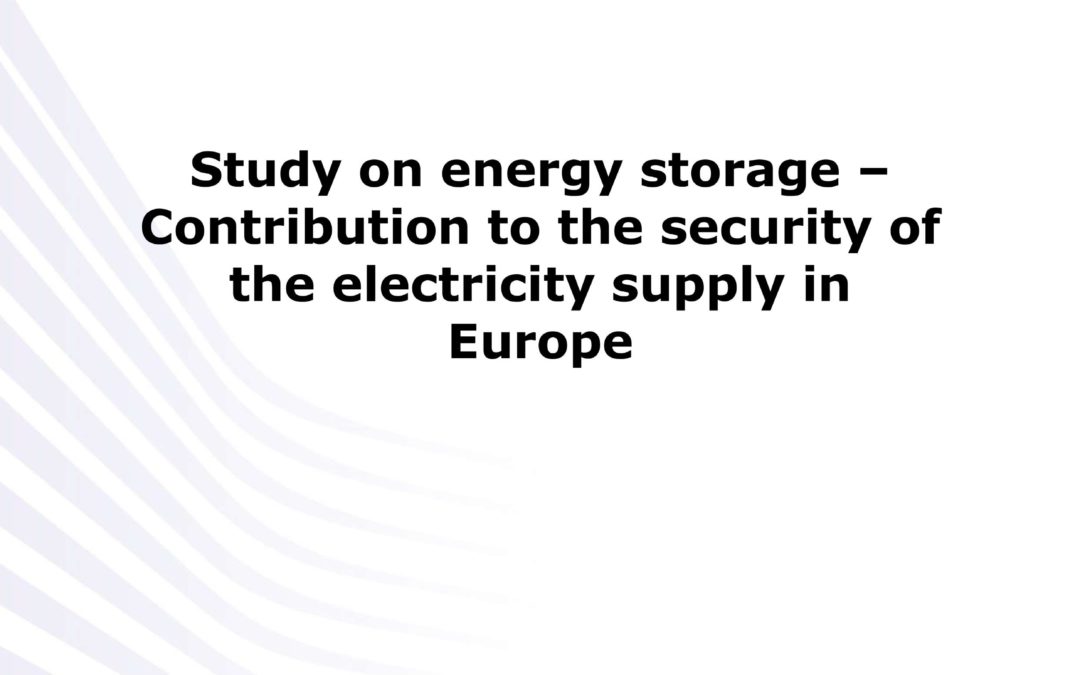This study, carried out with our partners Enerdata and Trinomics, has three objectives: presenting the current state of play of storage technologies (deployment in Member States and key characteristics), identifying the need for various types of flexibility solutions at the 2030 and 2050 horizons, and finally examining the regulatory conditions that should be put in place to enable the market to deliver the appropriate level of energy storage technologies. Artelys’ key contribution is the modelling of the pathways designed by the European Commission in the context of its Long-Term Strategy, and the optimisation of the deployment of flexibility solutions in these scenarios (interconnections, batteries, pumped-hydro storage, power-to-gas, etc.) in various configurations (e.g. several levels of demand-side flexibility). We have then analysed the contribution of each technology in the provision of flexibility on several time-scales, from the daily level to the seasonal level. The key finding is that several technologies have been found to compete to provide short- and medium-term flexibility (e.g. EVs, batteries, pumped-hydro storage, etc.), and that electrolysers will be key to provide seasonal flexibility services and the required levels of decarbonization in the industry, mobility and heating sectors.
Recent Posts
- Improving electrical transformer production planning with artificial intelligence solutions
- Artelys provides support to the French energy regulatory authority (CRE) in assessing the adequate incentive levels to foster distribution networks performance for TURPE 7
- Savings from smart charging electric cars and trucks in Europe: A case study for France in 2040 – Technical Report
- The MARI project is growing
- Investment needs of European energy infrastructure to enable a decarbonised economy
Archives
- April 2025
- March 2025
- February 2025
- January 2025
- December 2024
- November 2024
- September 2024
- August 2024
- July 2024
- June 2024
- May 2024
- April 2024
- March 2024
- January 2024
- December 2023
- November 2023
- October 2023
- September 2023
- August 2023
- July 2023
- June 2023
- May 2023
- April 2023
- March 2023
- February 2023
- January 2023
- December 2022
- November 2022
- October 2022
- September 2022
- July 2022
- June 2022
- May 2022
- April 2022
- March 2022
- February 2022
- January 2022
- December 2021
- November 2021
- October 2021
- September 2021
- August 2021
- July 2021
- June 2021
- May 2021
- April 2021
- March 2021
- February 2021
- December 2020
- November 2020
- October 2020
- September 2020
- August 2020
- July 2020
- June 2020
- May 2020
- April 2020
- February 2020
- January 2020
- December 2019
- November 2019
- October 2019
- September 2019
- July 2019
- June 2019
- April 2019
- March 2019
- February 2019
- January 2019
- December 2018
- October 2018
- August 2018
- July 2018
- June 2018
- May 2018
- April 2018
- March 2018
- February 2018
- January 2018
- November 2017
- October 2017
- September 2017
- August 2017
- July 2017
- February 2017
- November 2016
- October 2016
- August 2016
- July 2016
- May 2016
- April 2016
- January 2016
- November 2015
- October 2015
- September 2015
- March 2015
- June 2014
- October 2013

Recent Comments